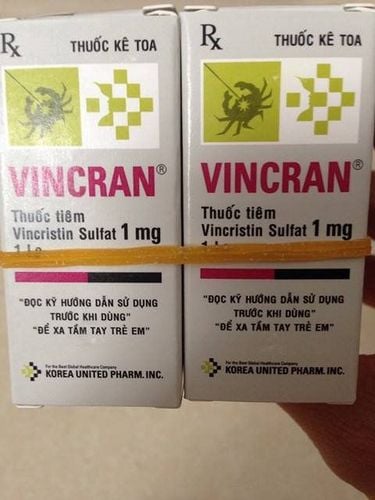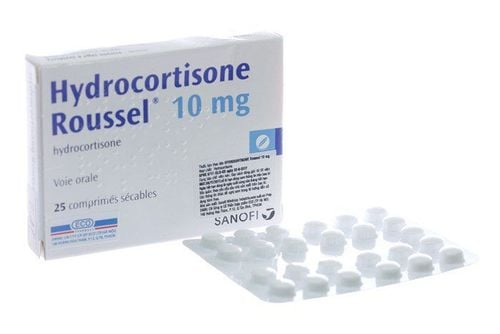This is an automatically translated article.
Post by Master, Doctor Phan Truc - Internal Medicine Oncologist - Hematology - Oncology Center - Radiation Therapy - Vinmec Times City International Hospital
Acute lymphocytic leukemia (ALL) is a malignant proliferative disease resulting from the accumulation of multistep mutations from a single lymphoid progenitor cell at one of several different developmental stages. . Let's learn more about this disease in the article below.
Acute lymphocytic leukemia (ALL) is a malignant proliferative disease resulting from the accumulation of multistep mutations from a single lymphoid progenitor cell at one of several different developmental stages. . The immunophenotype of leukemic cells at the time of diagnosis reflects the degree of differentiation of the malignant cell line. The origin of the malignant cell line was determined by cytogenetic analysis, restriction fragment polymorphism analysis for X-linked heterozygous genes (for female patients) and by differential analysis. analysis of TCR (T-cell receptor) or Ig (Imunoglubolin) gene rearrangements. Leukemia cells divide slowly and take longer to synthesize DNA than normal hematopoietic cells. However, they accumulate indefinitely, because of their altered response to growth and cell death signals. They crowd out with normal hematopoietic cells, leading to anemia, thrombocytopenia, and leukopenia. At the time of diagnosis, leukemia cells not only crowd out the normal cells in the marrow, but also infiltrate many sites other than the marrow.
Velpeau was the first to report leukemia in 1827. Virchow, Bennett, Craigie recognized the condition as a separate group of diseases in 1845. In 1847, Virchow proposed the term "weisses blut", then "leucaemia", he distinguished two types of disease on clinical grounds, splenic and lymphadenopathy. The staining methods introduced by Ehrlich in 1981 allow the differentiation of more distant subtypes of leukemia. In 1913, leukemia could be classified as acute or chronic, myeloid or lymphoid. The high rate of ALL occurring in children, especially between the ages of 1 and 5, was recognized in 1917.
Shortly after leukemia was recognized as a separate disease, doctors began to use the chemotherapy as adjunct to palliative care. The first advance was the use of a 4-amino acid (instead of 4-OH) analogue of folic acid called aminopterin, which arose from Farber's observation that folic acid accelerated the growth of cells. leukemia. It is striking that for the first time a complete clinical and hematological remission response lasting several months has been observed in children. A year later it was reported that a clinical remission response to aminopterin, a newly isolated adrenocortical hormone, was also reported to promote, albeit brief, remission in patients with leukemia. Almost simultaneously, Elion et al. synthesized anti-metabolites that interact with purine and pyrimidine synthesis. Their discovery led to the clinical use of mercaptopurine, 6-thioguanine and allopurinol. Between 1950 and 1960, many anti-leukemic drugs were introduced, and a few cures were observed. In 1962, Pinkel and colleagues at St. Jude (St. Jude Children's Research Hospital) offers a "holistic therapy" approach consisting of four treatment phases:
referral induction; The strengthening or reinforcing phase; Therapy for CNS infiltration (or meningococcal prophylaxis); Prolonged maintenance therapy.

In the early 1970s, more than 50% of children achieved an extended EFS (event-free survival). During the same time period, a better understanding of the genomics involved in human histocompatibility and the widespread use of HLA assays have contributed to the successful application of hematopoietic stem cell transplantation for therapeutic purposes. treatment of patients with recurrent leukemia. In the early 1980s, Riehm et al. introduced re-introduction therapy, also known as late reinforcement in the early phase of the continuation phase, consisting mainly of repetitions of the induction phase and initial early intensification. , and improved EFS by 70%. The understanding of the pathology of ALL has also improved in tandem with improvements in treatment. The recognition that ALL is a clinically, immunologically, and genetic heterogeneous group of diseases has led to a risk-based approach to treatment.
The treatment of ALL has improved dramatically, starting with the development of effective therapy for central nervous system disease, followed by early aggressive treatment, especially for patients. high risk of recurrence. Current cure rates of nearly 90% in children and 40% in adults demonstrate the steady progress in the treatment of this disease. The explosion of Genome Wide Association Study (GWAS) leading to the identification of genetic and epigenetic changes will inevitably lead to targeted agents for specific treatment. One clear step forward is the development of imatinib mesylate and dasatinib, drugs that target the BCR-ABL gene fusion leukemia.
Please dial HOTLINE for more information or register for an appointment HERE. Download MyVinmec app to make appointments faster and to manage your bookings easily.














